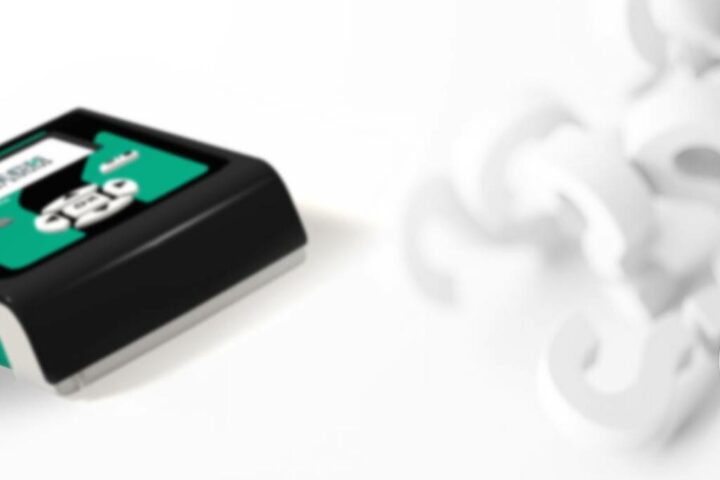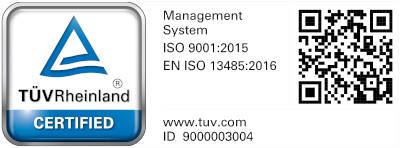Which PEMF therapy device should I choose?
There is a wide range of PEMF therapy devices available on the market. For the end user, it may be difficult to choose from the different models since they differ in the number of programmes, type of applicator and, last but not least, price.
First, it is essential to make sure that it is a medical device with the relative CE certificate issued by a body authorised by the Ministry of Health. Such documentation is public and, therefore, available upon request by the end user or even downloadable by accessing the specific website.
This check allows you to make the right choice, disregarding all those devices that are not certified and, therefore, not reliable.
Once you have done that, it is better to choose the model that allows you to carry out the treatment in line with that indicated by the medical diagnosis.
Does PEMF therapy have many contraindications?
PEMF therapy is one of the physical therapies with the lowest number of contraindications as is also evidenced by the numerous clinical studies performed on pulsed electromagnetic fields.
However, a number of basic warnings must be respected as indicated in the relevant user manuals in relation to the following: pregnant women; tuberculosis; juvenile diabetes; viral diseases (in the acute phase); mycosis; subjects with cardiopathies; those suffering from tumours; severe arrhythmias or pacemaker wearers; children; those with magnetisable prostheses; acute infections; epileptics (unless otherwise prescribed by doctors).
Most of the contraindications are indicated as a precaution by manufacturers who tend to protect themselves to avoid potential risks.
As for magnetisable prostheses, remember that they are no longer on the market and have not been used for at least 40 years. In particular, modern hip or knee implants do not interact in any way with the electromagnetic fields of PEMF therapy.
A further demonstration that magnetic fields are harmless to our body (except for the warnings described above) is given by an object we are in contact with every day. Nobody worries if a standard magnet that emits up to 4000 Gauss intensity may be harmful. Yet, every day we are constantly in contact with magnets of all kinds! Just think, for example, about those in the batteries of our mobile phones, speakers, etc.
How does PEMF therapy work?
PEMF therapy acts on the individual cells of the body “energetically recharging” them.
Living cells, both nerve and muscle, and generally all cells in the body, possess an electrical potential called resting membrane potential (RMP). It is calculated from the difference between the intra and extra cellular electric charge and oscillates, depending on the type of cell, between -55 and -90 mV.
The lower the potential difference, the lower the vitality of the cell. In general, because of a muscle injury, trauma, a wound, disease, etc., the cells in the affected area lose some of their electrical charge. That is to say, their potential difference varies.
In some cases, it is possible to replenish the lost part of the charge: the electromagnetic field generated by the PEMF therapy device is able to transfer electric charge to the cell itself. This is known as cellular biostimulation, an action that “awakens” the cell by reactivating our body’s self-healing process.
Why is PEMF therapy effective against pain?
This effectiveness is based in particular on the pulsation of the electromagnetic field that is activated and deactivated alternately in rapid succession. This mechanism results in the cell being stimulated by the sequence of electromagnetic fields. These in turn give energy to the cell by charging it electrically.
The biological modifications induced by the magnetic fields on biological membranes, on the cells and on the vessels result in therapeutic effects of various types: anti-inflammatory, anti-oedema and stimulating tissue repair.
Muscle relaxation, obtained through PEMF therapy, contributes in turn to improve microcirculation, the smooth fibres relax and a vasodilating effect is produced. The release of endorphins helps to increase the pain threshold, and slight hyperaemia produces an anti-inflammatory effect.
For how long and how many times a day can PEMF therapy be used?
For effective PEMF therapy treatment it is essential to consult your doctor first to properly diagnose the condition you are suffering from.
In general, PEMF therapy requires medium-long treatment periods. It is advisable to perform cycles of 45-90 days with a minimum duration of 3 hours per day, unless otherwise indicated by the doctor. If necessary, it is possible to repeat the treatment several times during the year. For example in the case of arthrosis, arthritis, osteoporosis and joint pain.
However, there is no risk of overdosing. In fact, as in the case of treatments for osteoporosis, it is possible to carry out night therapy for several consecutive hours.
After how long is it necessary to check the purchased device?
PEMF therapy devices have several advantages over other machines for instrumental physical therapy. For example, they do not require consumables such as gel or pre-gelled electrodes to be purchased after a certain number of treatments.
The actual machine components do not require particular maintenance, like, for example, other therapies do. For example, laser devices, which require careful maintenance due to the consumption of the laser diode that produces the light beam.
The guidelines for medical devices recommend an efficiency and safety check of the device every two years. This does not mean that a PEMF therapy device, if used correctly and kept properly, can last a lifetime.
What are the main effects of PEMF therapy?
PEMF therapy’s main purpose is electrically recharging cells, hence it is often called cellular biostimulation.
There are various effect produced in the human body, the most important ones are as follows:
- Osteogenesis: PEMF therapy stimulates the activity of osteoblasts, i.e. cells responsible for the regeneration of bone tissue. Precisely for this reason, PEMF therapy, in particular low frequency, is indicated for all conditions concerning bone tissue, such as arthritis or osteoporosis. It is highly recommended for delayed union following a fracture.
- Antalgic effect: the relaxation of muscle tissue decompresses adjacent tissues, the pain threshold rises and circulation improves. This is due to the decreased pressure on the arterioles and the venules which helps to curb the inflammatory process
- Relaxing effect on smooth and striated muscles: acts on muscle contractures, relaxing the fibres. At the same time it helps to decompress the joints on which the affected muscles act, freeing them from excessive pressure
Are PEMF therapy devices effective?
PEMF therapy has been a well-established therapy with universally recognised effectiveness for decades.
Numerous documented clinical studies report the effectiveness of PEMF therapy in the treatment of various conditions. In particular on bone tissues but also for muscle-ligament problems.
To find out more about the clinical references supporting PEMF therapy, visit the Bibliography page.







